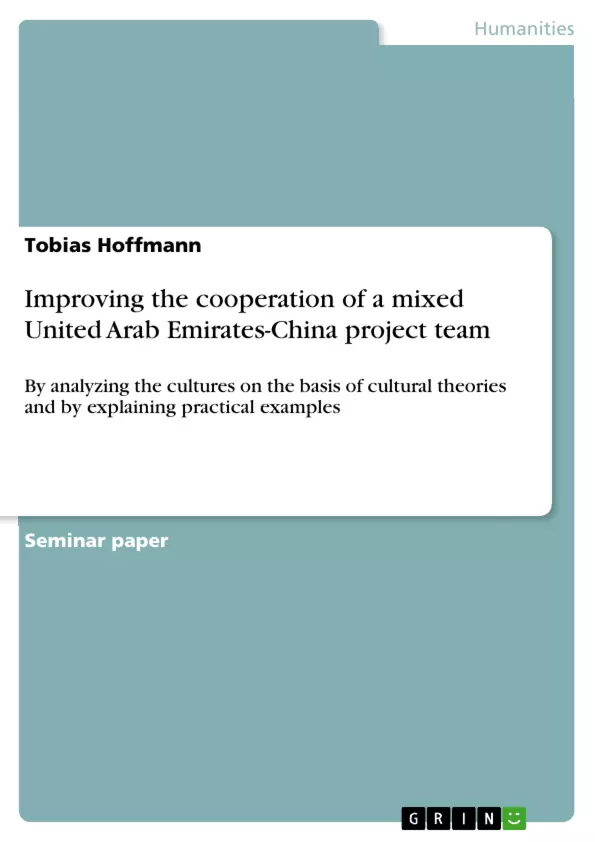Analyse der Kulturen der Vereinigten Arabischen Emirate und China anhand der kulturellen Dimensionen nach Geert Hofstede mit dem Hintergrund ein gemischtes Projektteam auf die interkulturelle Zusammenarbeit vorzubereiten.
Inhaltsverzeichnis (Table of Contents)
- 1 - Introduction
- 1.1 – Cultural background of the UAE and China
- 1.2 - Objectives and scope of work
- 2 - Cultural analysis of the UAE and China
- 2.1 Power Distance
- 2.2 Uncertainty avoidance
- 2.3 Individualism versus collectivism
- 2.4 Masculinity versus femininity
- 2.5 - Long-term versus short-term orientation
- 3 - Conclusion
- 3.1 - Cooperation between the UAE and China
- 3.2 - Prospects
Zielsetzung und Themenschwerpunkte (Objectives and Key Themes)
This paper analyzes the cultural differences between the United Arab Emirates and China to establish a successful UAE-China project team. The study utilizes Geert Hofstede's five cultural dimensions: Power Distance, Uncertainty Avoidance, Individualism versus Collectivism, Masculinity versus Femininity, and Long-term versus Short-term Orientation. The analysis aims to provide insights into the cultural nuances of both countries, highlighting the potential challenges and opportunities for effective cross-cultural collaboration.- Cultural Differences between the UAE and China
- Hofstede's Cultural Dimensions
- Power Distance and Uncertainty Avoidance
- Individualism versus Collectivism
- Masculinity versus Femininity and Long-term versus Short-term Orientation
Zusammenfassung der Kapitel (Chapter Summaries)
- Chapter 1 - Introduction: This chapter introduces the cultural background of the United Arab Emirates and China, highlighting the significance of their cultural differences in the context of international project teams. The chapter also outlines the objectives and scope of the work, emphasizing the application of Geert Hofstede's five cultural dimensions for analyzing these differences.
- Chapter 2 - Cultural Analysis of the UAE and China: This chapter delves into the cultural characteristics of the UAE and China, examining each of Hofstede's dimensions in detail. The chapter provides a comparative analysis, highlighting the distinct cultural values and practices prevalent in both countries.
- Chapter 3 - Conclusion: This chapter discusses the implications of the cultural analysis for fostering cooperation between the UAE and China. It explores the potential benefits and challenges associated with working across cultural boundaries. The chapter concludes by offering practical recommendations for enhancing cross-cultural teamwork.
Schlüsselwörter (Keywords)
This paper focuses on the cultural differences between the UAE and China, drawing on Geert Hofstede's five cultural dimensions, including power distance, uncertainty avoidance, individualism versus collectivism, masculinity versus femininity, and long-term versus short-term orientation. The study examines the implications of these differences for effective teamwork in a UAE-China project context.
Fin de l'extrait de 13 pages
- haut de page
- Citation du texte
- Tobias Hoffmann (Auteur), 2014, Improving the cooperation of a mixed United Arab Emirates-China project team, Munich, GRIN Verlag, https://www.grin.com/document/284810
Lire l'ebook



